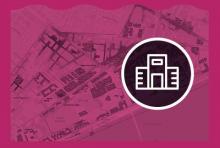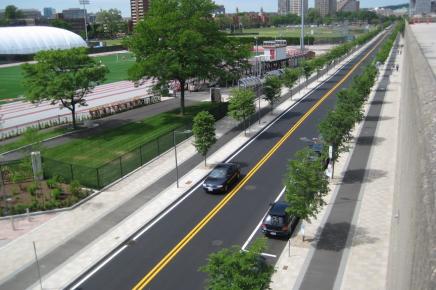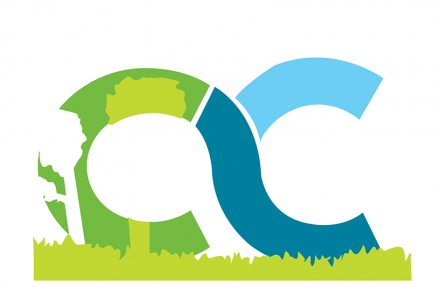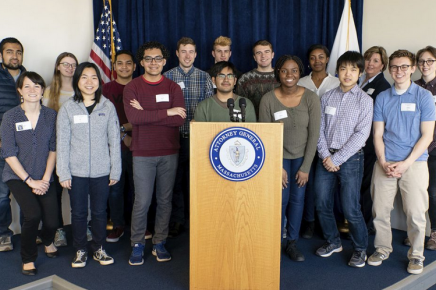The dashboard seeks to translate the science of these climate risks into visual maps for use in operational and strategic decision-making about campus-wide planning, capital renewal, new capital projects, and community preparedness.
Climate Resiliency

Growing a climate resilient MIT involves understanding what risks and disruptions may impact the campus in order to prepare the campus community for the impacts of climate change. These potential impacts include:
-
Flooding from more frequent and extreme rains
-
Flooding from storm surges and rising sea-levels
-
Extreme heat events
A climate resilient MIT (explore MIT's climate resiliency work to date in the in this MIT News article) is an Institute that continues to fulfill its mission in the face of these impacts. Recent disruptive weather events — both localized and regional — have helped to raise the awareness of and vulnerability to flooding in the region. To build a climate resilient MIT, we seek to understand and prepare for the flood risk to campus as well as extreme heat events.
The MIT Climate Resiliency Committee, managed by the Office of Sustainability is tasked with assessing, planning, and operationalizing a climate resilient MIT. The Committee is a collaboration among faculty; engineering and facility staff; risk, insurance, and climate science experts; emergency management; and students individually and collectively driving efforts that grow a climate resilient campus.
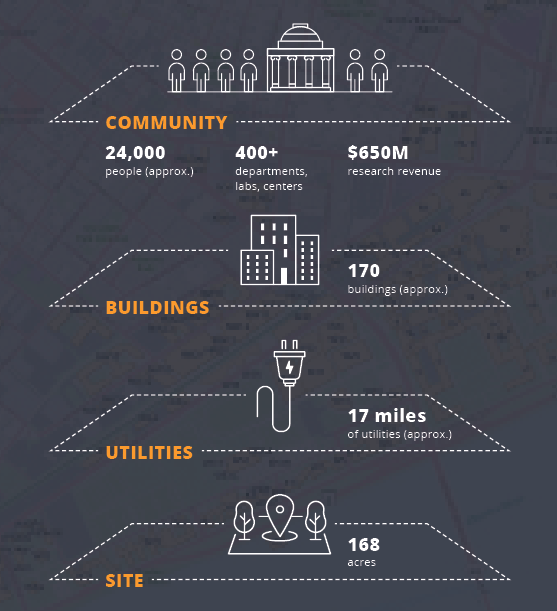
MITOS is also convening operational, research scientists, and municipal planning experts who are best positioned to identify campus climate challenges and opportunities for enhancing resiliency and preparedness at the campus and city scale:
-
The MIT Climate Resiliency Committee: The MIT Climate Resiliency Committee, managed by the Office of Sustainability is tasked with assessing, planning, and operationalizing a climate resilient MIT. The Committee is a collaboration among faculty; engineering and facility staff; risk, insurance, and climate science experts; emergency management; and students individually and collectively driving efforts that grow a climate resilient campus
-
Department of Facilities Subcommittee on Operationalizing Climate Resiliency: This small subcommittee is focused on identifying campus priorities for climate resiliency planning, design review and near-term investments across building, district and campus scales.
-
MIT/City Flood Risk Collaboration: A joint effort between MIT and the City of Cambridge to harmonize data, research activities and modeling tools that can enable climate resilient planning across campus and city shared boundaries. Read more here.
Climate Resiliency Partners:
Climate Resiliency Resources
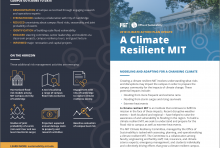
An update from the Office of Sustainability and the MIT Climate Resiliency Committee, which is tasked with assessing, planning, and operationalizing a climate resilient MIT.
MITOS Vision for Climate Resiliency
To enable an MIT community that fulfills the mission of the Institute and thrives in the face of disruptions from intensifying climate risks, including more frequent and extreme flooding and heat.
Water is an indispensable resource, not only for MIT, but also for the global community. Our campus’ health and activities are dependent on a consistent water supply for restrooms, drinking water faucets, showers, cafeterias, laboratories, and landscaping.
From a semi-industrial landscape to a densely populated center of innovation, our campus landscape has undergone dramatic evolution since MIT moved across the Charles River to Cambridge in 1916. Currently, approximately 64 percent of MIT’s campus is composed of impervious surfaces, such as roofing and paving. Green spaces provide areas for recreation and habitats for local wildlife.
Air quality is a measure of the concentration of pollution in the surrounding air over a period of time. There are many sources of air pollutants and factors that can effect air quality: emissions from energy production, vehicle exhaust, solvent fumes, methane from waste, smoke, organic matter like pollen, and changes in the weather.
Climate Resiliency - Planning
Data-Driven Flood Risk Planning
MITOS, along with fellows and researcher scientists, engages climate modelers, scientists, and engineers at MIT and in Cambridge and Boston to help inform data-driven flood risk planning for the campus and region. Explore MIT's Climate Resiliency Dashboard.
The MIT Climate Resiliency Dashboard is an informational tool enabling the MIT community to understand risk to the Cambridge campus from flooding under both today's climate a future, changed climate. Learn more about the Dashboard in a recent MIT News article. This dashboard seeks to translate the science of these climate risks into visual maps for use in operational and strategic decision-making about campus-wide planning, capital renewal, new capital projects, and community preparedness. This Dashboard has been created using the latest climate impact models (in partnership with the MIT Center for Global Change Science) and is harmonized and regularly updated with the City of Cambridge's climate change flood model. Read more here.
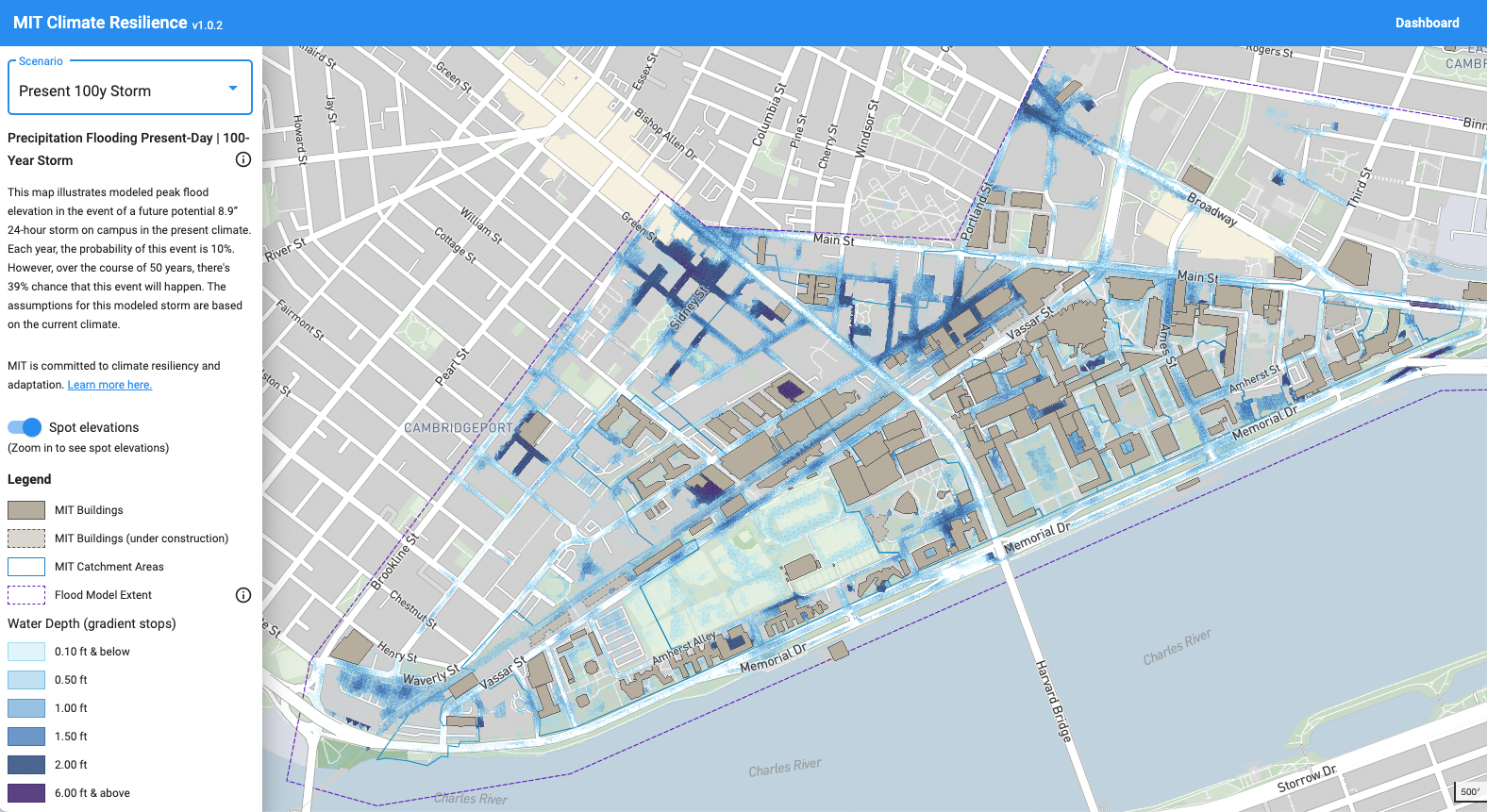
MIT Campus Flood Risk Model:
Informed by both the MIT Flood Vulnerability Study and Sustainability Stormwater and Landscape Ecology Plan, MIT is preparing a campus-based flood risk model that will integrate campus risk modelling with the City of Cambridge Flood Risk Model. This combined model will provide a comprehensive understanding of current and future risks to a range of flood scenarios including precipitation, riverine, sea level rise and storm surge events. Since MIT is also undergoing a significant capital renewal, this dynamic two-dimensional model will also serve as an adaptive planning tool for informing current and future flood risk based on new campus growth.
MIT Flood Vulnerability Study Phase - 1A Report: This report served as a key scientific justification for development of the MIT campus flood risk model. This report summarizes findings from the initial research study to understand the general scope and extent of flood risks facing the MIT campus in both the current and future climate. This paper was prepared jointly between MITOS and the Joint Program on the Science and Policy. Read the paper here.
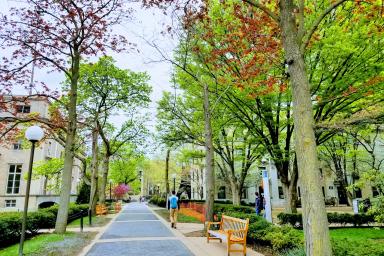
MIT Stormwater and Landscape Ecology Plan: MIT completed the Phase 1 Draft Stormwater and Landscape Ecology Master Plan (2017) that provides an overview of stormwater management challenges at both a campus and city-scale context, recommends benchmarks for landscape performance and identifies potential strategies for enhancing campus management of stormwater and landscape ecology. Read the plan here.
Climate Resiliency - Risks
The impact of climate change on the campus
MIT is working collaboratively to address the risks of climate change and its anticipated impacts on the campus and community. These impacts include: more frequent flooding, extreme precipitation, rising sea levels, and heat events.
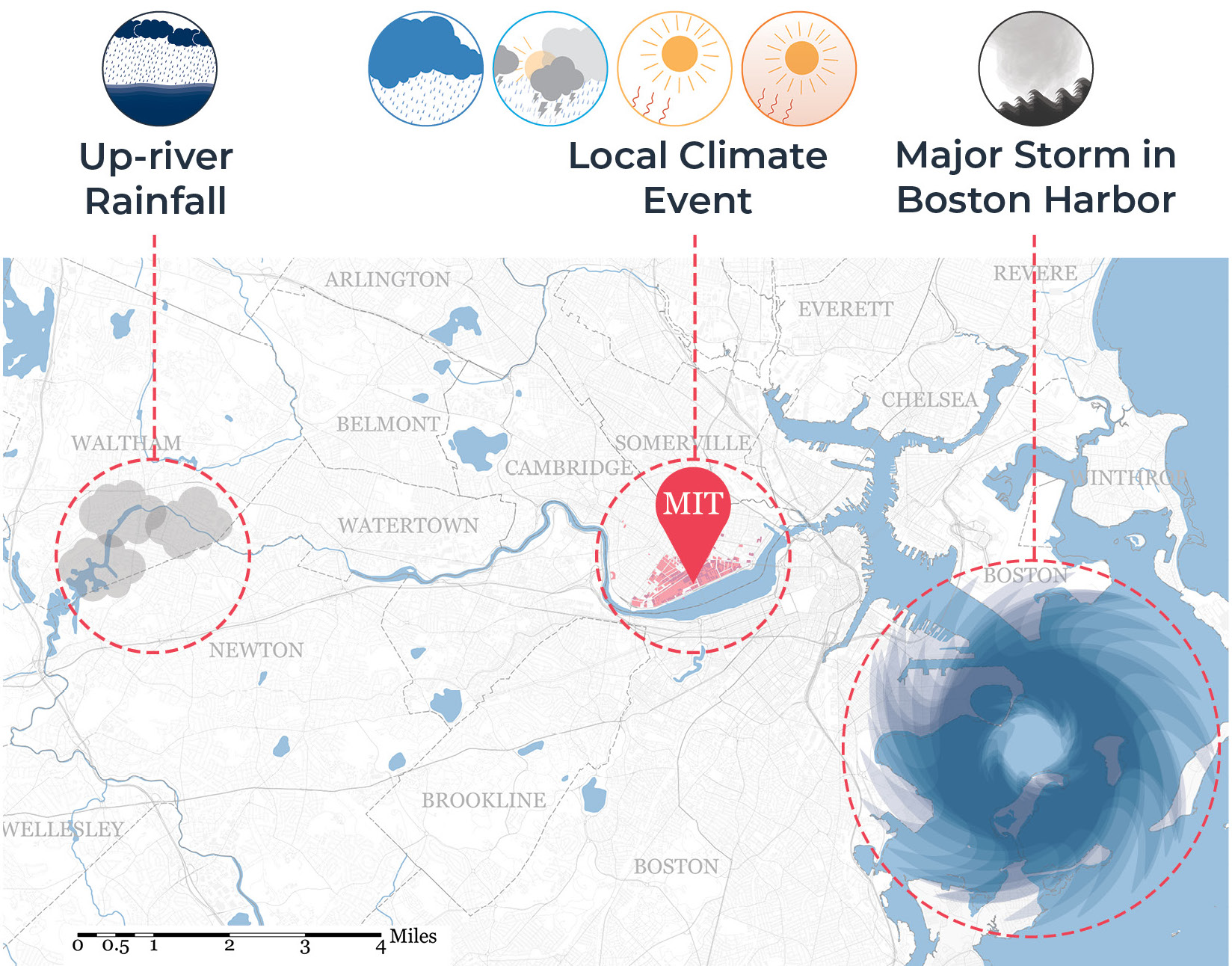
Coastal and River Flood Risks
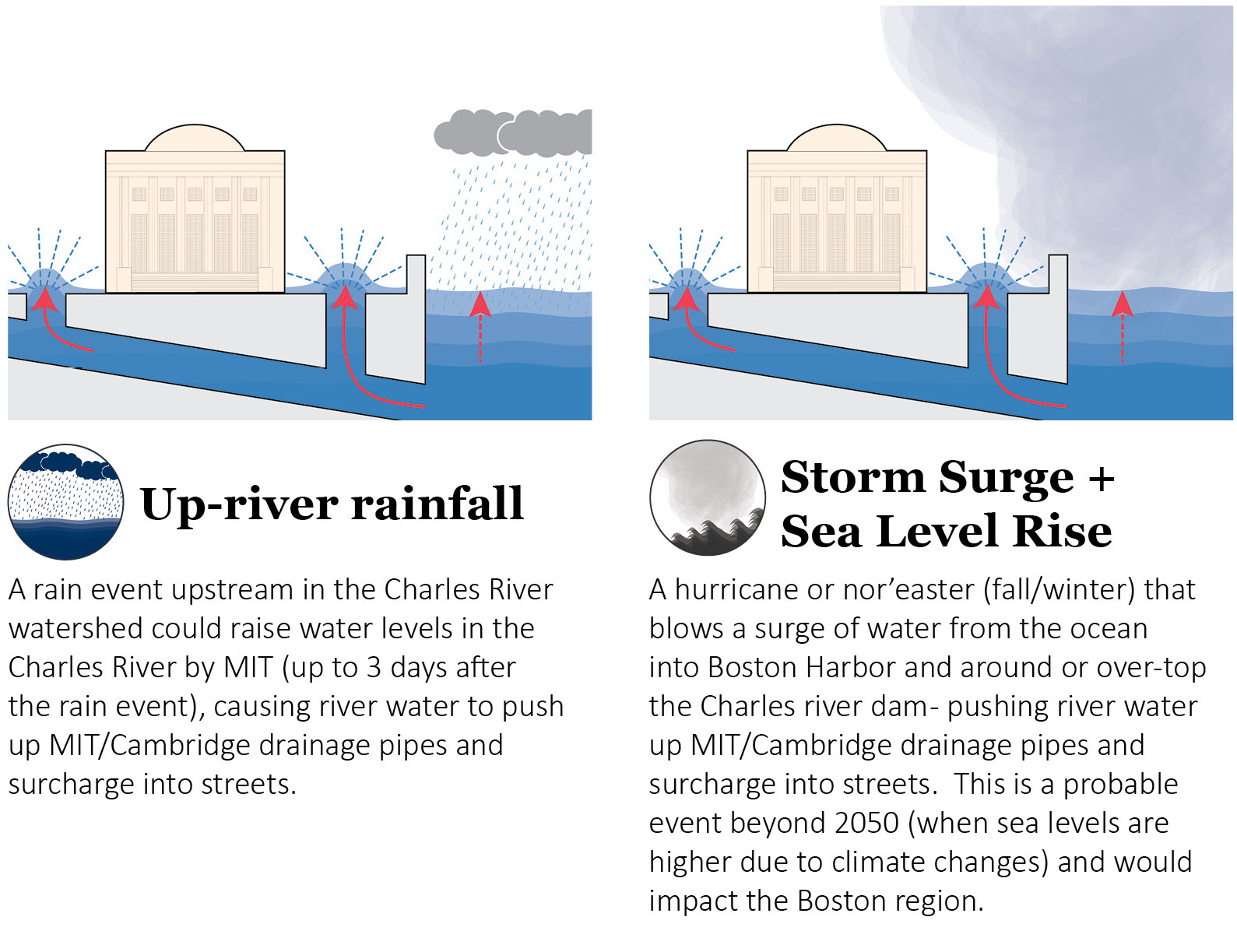
Inland Flood Risks
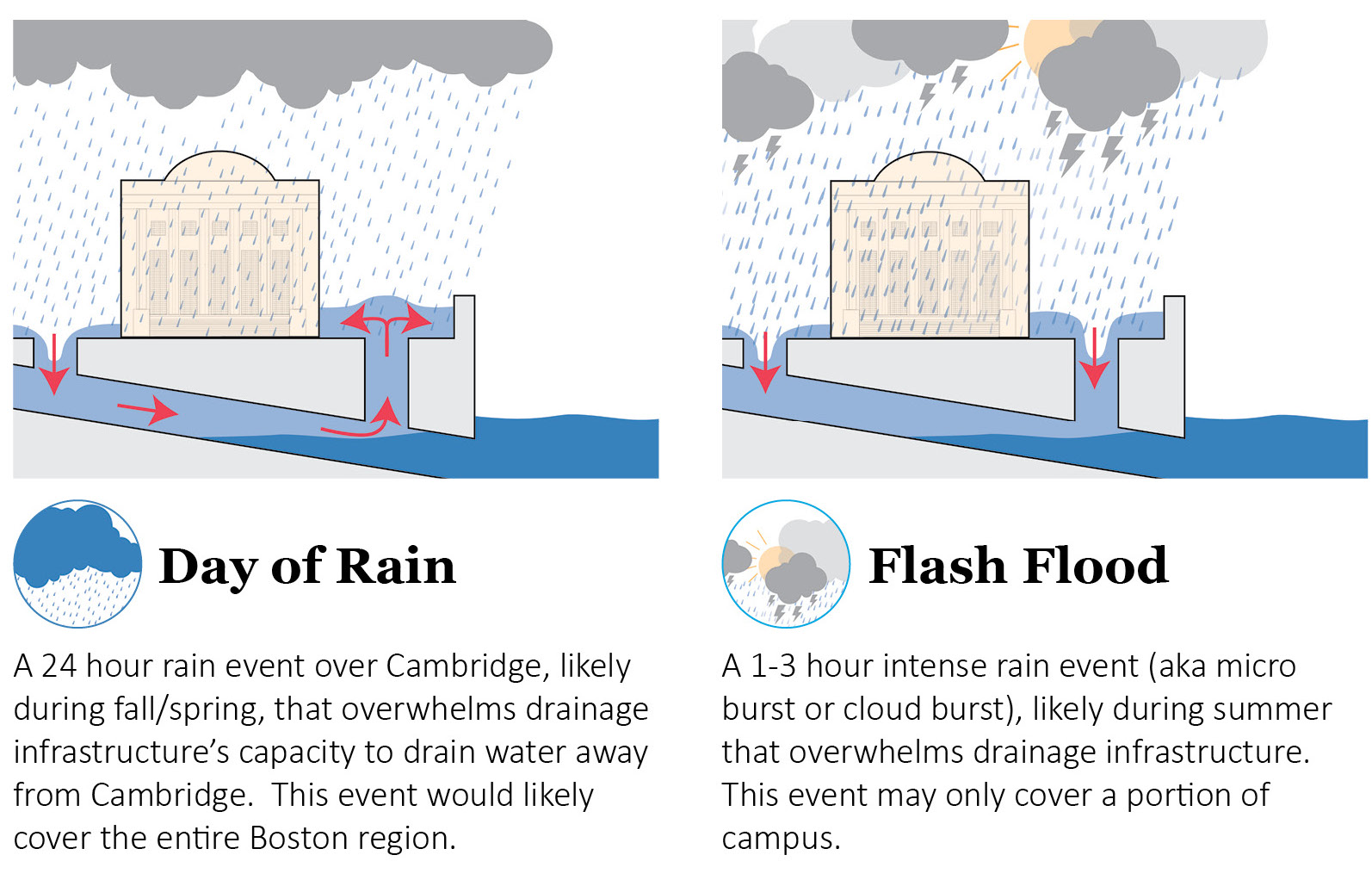
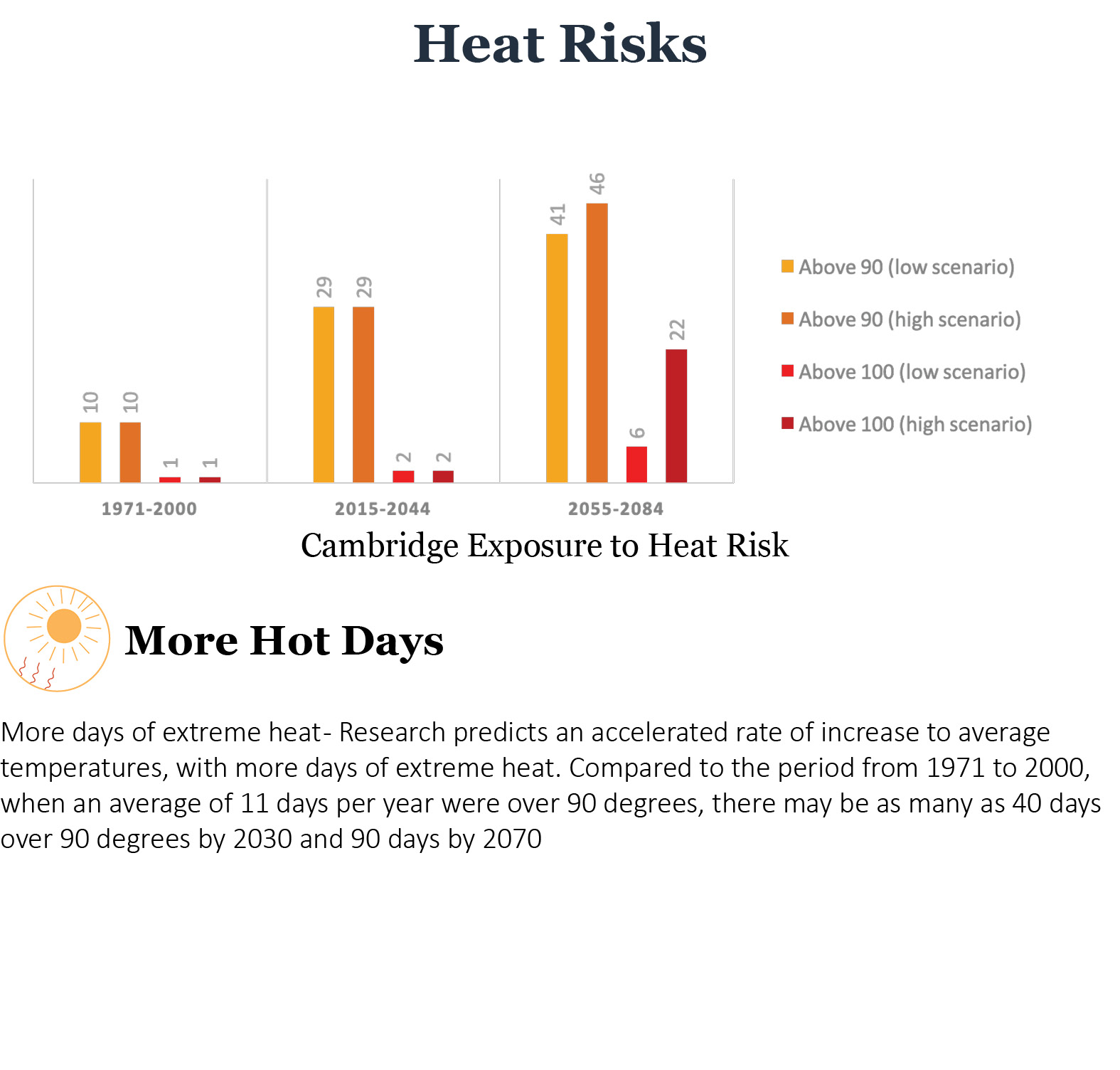
City of Cambridge Climate Vulnerability Assessment 2015
Climate Resiliency - Research
Climate Resiliency Research
"Leveraging Local Learning about Global Climate Change"
Ongoing research is an essential part of supporting a climate resilient MIT. This is accomplished through partnership with researchers and faculty as well as students. This work with students provides valuable insight and experience and supports one goal of MIT’s Fast Forward climate action plan which is to provide in-depth climate research experiences to our students.
MITOS student researchers along with collaborations with undergraduate and graduate students in resiliency analysis, modeling, and communication, deepen each student’s education, advance the state of research, and provide educational material for the campus. MITOS staff and Faculty Fellow Ken Strzepek helps to coordinate climate resiliency research activities.
Some of the student projects coordinated by MITOS include:
-
Building the MIT Climate Resiliency Dashboard - Visually communicating climate risks to the MIT campus helps the community understand projected flood risks for campus locations, grounded in the science-based MIT/City of Cambridge flood risk model. This MIT dashboard was built by a multi-stakeholder collaboration led by graduate student fellows from the Department of Urban Studies and Planning, MITOS Faculty Fellow Ken Strzepek, and staff from the Department of Facilities.
-
Modeling campus basement porosity - Understanding basement flood risk probability and peak water depth are key data points for determining risks to the continuity of MIT research and operations. In partnership with the Urban Risk Lab (and supported by a web app created by research scientists Aditya Barve and Mayank Ojha ), MITOS convened 15 students in a week-long “Porosity Hunt” to model exterior openings in campus basements that could enable flood water penetration. PhD student Katarina Boukin is integrating these findings into her PhD exploring modeling techniques for predicting flood risk on the MIT campus.
-
Urban heat island studies using MIT campus - Increasing heat risk requires understanding of how the current campus landscape experiences summer extreme heat. In partnership with the Department of Civil and Environmental Engineering, graduate student Lauren student is designing, building, deploying, and monitoring heat indicators at different outdoor campus locations.
-
Projecting future climate change impacts - Updating climate change projections for the MIT campus, based on evolving global circulation models, is important for understanding and planning for the dynamics of a changing climate. This study was carried out by MIT undergraduate Piero Oderique through the experiential learning opportunity (MIT ELO) fellowship program.
-
Understanding campus climate impacts - Quantifying the impacts of potential climate risk to the campus community, buildings, utilities and site is enabling MIT to prioritize climate resiliency actions. Student Fellow Diego Castillo Peredo led this study in partnership with graduate students from the MIT Department of Urban Studies and Department of Civil and Environmental Engineering as well as staff from MIT campus operational, insurance, risk, engineering and capital renewal planning.
Resiliency Stress Test
The Resiliency Stress Test has been conducted for campus in partnership with experts from climate science and operations to evaluate a sample of campus to: 1) Identify the range of potential impacts from climate events and 2) Explore potential solutions that can reduce climate risks to campus.
Step 1: The building, infrastructure, and site systems sub-groups are each describing potential impacts to their respective systems from the same scenarios for both an extreme rain and an extreme heat event. Once these impacts are described and synthesized from the building, infrastructure, and site systems sub-groups, the community systems sub-group will then identify ways that the impacts affect the MIT community.
Step 2: This baseline understanding of impacts identified (Step 1) will enable each sub-group to explore strategies for reducing the risks of climate impacts. By understanding potential risk reduction strategies for a small scale portion of campus, MIT can become familiar with the breadth and depth of technical, financial, and social adaptations required for campus-wide resiliency.
Early findings from Step 1 show that there is considerable interdependency among building, infrastructure, and site systems such that a failure in one system can cause a failure in other systems. This recognition is requiring extensive collaboration among the sub-groups as they describe both the impacts as well as potential solutions.
Growing a resilient MIT requires a community-wide understanding of climate risks and adaptation opportunities. Collaboration with key partners has furthered our education and awareness-raising.
MITOS and the MIT Office of Emergency Management collaborated with the Cambridge Compact for a Sustainable Future to host a Climate Resiliency Tabletop Exercise . The event engaged Cambridge businesses, the cCity and institutions in identifying business continuity and coordination challenges and opportunities following a climate-based incident that causes business and research interruptions.
PKG Spring Break matches teams of MIT students with community organizations where students learn firsthand about complex social issues impacting communities and the work that is being done to address those challenges. Student leaders facilitate this experience for their assigned cohort, and utilize the support of staff mentors to create a fun, community-embedded, and thought-provoking experience.
MIT partnered with the City of Cambridge to present the joint case of campus/city climate resiliency planning at the Forging University-Municipality Partnerships Toward Urban Sustainability Conference. The goal of the conference was to inspire progress by sharing successful examples of university-municipality collaboration on sustainability efforts.



